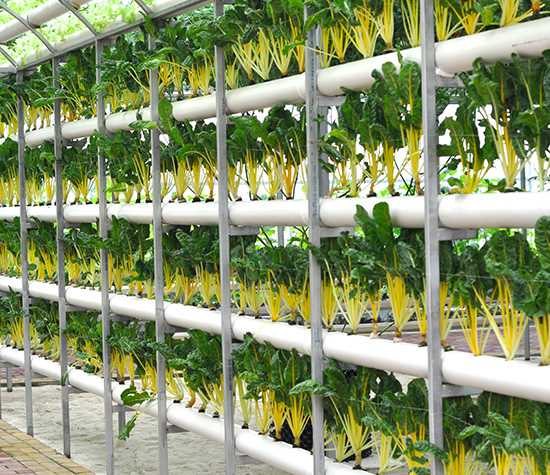Vertical farming proves fruitful in UAE, other Gulf countries
World: With controlled environment agriculture methods gaining ground across the Gulf countries, vertical farming is becoming increasingly vital and attracting investments from regional and overseas players.
According to Orbis Research, the vertical farming market, a type of agriculture in which food grows on trays or hanging modules in a climate-controlled, indoor facility, is expected to reach USD 1.21 billion by 2021 at a CAGR of 26.4 per cent from only USD 0.38 billion in 2016.
One of the six Gulf Cooperation Council (GCC) countries leading this change is the UAE, which has upcoming projects facilitated by the government as well as private players to help increase food security in the region.
These include the UAE Ministry of Climate Change and Environment allotting space for 12 vertical farms to be built by Shalimar Biotech Industries, and the world’s largest vertical farm for Emirates Airlines by Crop One Holdings Inc.
With around 90 per cent of food being imported in the UAE, territorial problems of water scarcity and small percentages of arable land, vertical farming is becoming increasingly vital to ensure food security within the region.
Mariam Al Mehiri, Minister of Future Food Security and a leading campaigner of urban farming, plans to create a ‘Food Valley’ or a technology hub, dedicated to the development of food and farming automation.
The Food Valley, and other government-led initiatives, are being introduced to attract and enable a new generation of farmers to help build future sustainability.
The minister, during an interview to euronews, said “(The idea) comes from the Silicon Valley in the US, where you have technologies, or start-ups, sprouting and developing into commercial giants. We want to bring this to the UAE and build a Food Valley that’s all about food technologies.
By capitalising on vertical space, and controlling the environment for year-round optimal growth, Controlled Environment Agriculture (CEA) can produce significantly more yields per square foot than traditional agriculture, while using only a fraction of the water.


Comments are closed.